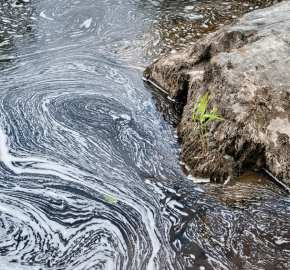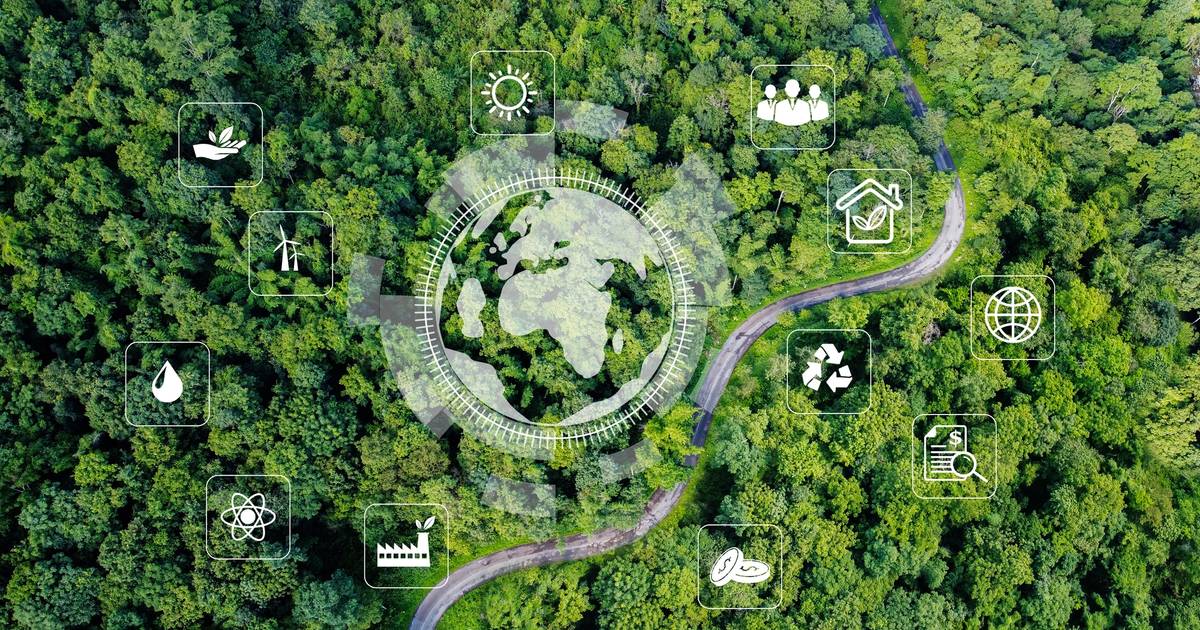Report on Pesticide Data Disclosure Ruling and Implications for Sustainable Development Goals
Introduction
A recent ruling by the Information Commissioner’s Office (ICO) mandates that the Health and Safety Executive (HSE) must disclose pesticide usage records held by farmers in Wales. This decision represents a significant advancement for environmental transparency and directly supports the achievement of several key United Nations Sustainable Development Goals (SDGs), particularly those concerning clean water, biodiversity, and institutional accountability.
Case Background and Procedural History
The case was initiated by the environmental organization WildFish following the identification of significant chemical pollution in a Welsh Dee catchment area by its SmartRivers citizen science project. The request for information was made under the Environmental Information Regulations 2004.
- WildFish requested pesticide use records from the HSE for a specific catchment area to investigate sources of pollution.
- The HSE initially argued it did not hold the records, which are maintained by farmers on its behalf under assimilated European law.
- An initial ICO Decision Notice in November 2024 ordered the HSE to provide the information.
- The HSE subsequently refused compliance, claiming the request was “manifestly unreasonable”.
- The latest ICO ruling has dismissed the HSE’s argument, ordering the executive body to comply with the original request.
Strengthening Institutional Accountability and Access to Information (SDG 16)
This ruling is a critical step in upholding SDG 16: Peace, Justice and Strong Institutions. By compelling a public body to adhere to environmental information regulations, the decision reinforces the principles of transparency and accountability. It ensures public access to vital environmental information, a cornerstone of Target 16.10, allowing for greater scrutiny of regulatory practices and their impact on the environment.
Advancing Clean Water and Protecting Aquatic Life (SDG 6 & SDG 14)
The disclosure of pesticide data is fundamental to achieving SDG 6: Clean Water and Sanitation and SDG 14: Life Below Water. Access to this information is essential for protecting freshwater ecosystems from land-based pollution sources.
- It enables the identification of pollution hotspots, directly supporting Target 6.3 to improve water quality by reducing pollution.
- It allows conservation groups and academics to assess the impact of specific chemicals on aquatic ecosystems, contributing to the protection of biodiversity as outlined in SDG 14.
- The data can inform targeted mitigation strategies to prevent harmful chemicals from entering rivers and streams, thereby protecting entire aquatic food webs.
Promoting Sustainable Land and Chemical Management (SDG 15 & SDG 12)
The availability of pesticide usage data also supports progress towards SDG 15: Life on Land and SDG 12: Responsible Consumption and Production. Understanding the types, quantities, and locations of pesticide application is crucial for promoting more sustainable agricultural practices.
- This information facilitates the environmentally sound management of chemicals (Target 12.4) by highlighting areas of intensive use and potential risk.
- It contributes to the conservation and sustainable use of inland freshwater ecosystems (Target 15.1) by providing the evidence base needed to reduce chemical runoff from agricultural land.
Conclusion and Future Actions
The ICO’s decision is a landmark for environmental governance in the UK. It empowers the public and conservation bodies to hold institutions accountable and provides the necessary data to address chemical pollution, thereby supporting an integrated approach to achieving the Sustainable Development Goals. WildFish continues to pursue this objective through a parallel case, appealed by the HSE to the First Tier Tribunal, which is scheduled for a hearing on December 8, 2025.
Sustainable Development Goals (SDGs) Addressed in the Article
- SDG 6: Clean Water and Sanitation
- SDG 12: Responsible Consumption and Production
- SDG 14: Life Below Water
- SDG 15: Life on Land
- SDG 16: Peace, Justice and Strong Institutions
Specific Targets Under Identified SDGs
-
SDG 6: Clean Water and Sanitation
- Target 6.3: By 2030, improve water quality by reducing pollution, eliminating dumping and minimizing release of hazardous chemicals and materials.
- Explanation: The article directly addresses this target by focusing on the “significant chemical pollution” in the Welsh Dee catchment caused by pesticides from farms. WildFish’s efforts to obtain pesticide use records are aimed at scrutinizing and ultimately reducing the release of these hazardous chemicals into rivers.
-
SDG 12: Responsible Consumption and Production
- Target 12.4: By 2020, achieve the environmentally sound management of chemicals and all wastes throughout their life cycle… and significantly reduce their release to air, water and soil to minimize their adverse impacts on human health and the environment.
- Explanation: The core issue is the management of pesticides (chemicals) in agriculture (a production pattern). The article highlights the need for transparency regarding “what pesticides are used, on what land, and in what quantities” to ensure their release into water is monitored and managed, thereby minimizing their adverse impact on aquatic ecosystems.
-
SDG 14: Life Below Water
- Target 14.1: By 2025, prevent and significantly reduce marine pollution of all kinds, in particular from land-based activities, including… nutrient pollution.
- Explanation: Pesticide runoff from farms is a form of land-based pollution. The article explicitly states that these chemicals are “washed into streams, lakes and rivers where they affect entire aquatic ecosystems.” These freshwater systems ultimately flow into marine environments, making the reduction of this pollution source relevant to protecting life below water.
-
SDG 15: Life on Land
- Target 15.1: By 2020, ensure the conservation, restoration and sustainable use of terrestrial and inland freshwater ecosystems and their services…
- Target 15.5: Take urgent and significant action to reduce the degradation of natural habitats, halt the loss of biodiversity…
- Explanation: The article’s focus on pesticide pollution directly relates to the degradation of “inland freshwater ecosystems” like the Welsh Dee. The statement that pesticides “affect entire aquatic ecosystems” implies a negative impact on biodiversity and the health of these habitats, which these targets aim to prevent.
-
SDG 16: Peace, Justice and Strong Institutions
- Target 16.10: Ensure public access to information and protect fundamental freedoms, in accordance with national legislation and international agreements.
- Explanation: The entire article describes a legal battle to enforce the public’s right to access environmental information. WildFish is using the “Environmental Information Regulations 2004” to compel a public institution (the HSE) to be transparent. The solicitor’s quote, “Members of the public have a right to see what’s going into our rivers,” and the ICO’s ruling in their favor directly exemplify the implementation of this target.
Indicators for Measuring Progress
-
Implied Indicator for SDG 6 and 15: Water Quality Data
- The article mentions that the SmartRivers citizen science project “identified significant chemical pollution.” This finding serves as a direct indicator of poor water quality and the degradation of a freshwater ecosystem, which can be used to measure the state of the river against Target 6.3 and Target 15.1.
-
Implied Indicator for SDG 12 and 14: Records of Pollutant Release
- The specific information sought by WildFish—”records of pesticide use by farmers,” including “what pesticides are used, on what land, and in what quantities”—is the raw data needed to create indicators for measuring the release of chemicals into the environment. This data is essential for tracking progress towards Target 12.4 and Target 14.1.
-
Implied Indicator for SDG 16: Rulings on Access to Information
- The “Decision Notice” issued by the Information Commissioner’s Office (ICO) ordering the HSE to disclose the records is a tangible indicator of the functioning of laws that ensure public access to information. It measures the effectiveness of the institutions responsible for upholding Target 16.10.
Summary Table of SDGs, Targets, and Indicators
| SDGs | Targets | Indicators Identified in Article |
|---|---|---|
| SDG 6: Clean Water and Sanitation | 6.3: Improve water quality by reducing pollution and minimizing the release of hazardous chemicals. | Findings of “significant chemical pollution” in the Welsh Dee by the SmartRivers project. |
| SDG 12: Responsible Consumption and Production | 12.4: Achieve the environmentally sound management of chemicals and reduce their release to water and soil. | Records of pesticide use detailing what chemicals are used, on what land, and in what quantities. |
| SDG 14: Life Below Water | 14.1: Prevent and significantly reduce marine pollution from land-based activities. | Data on pesticides being “washed into streams, lakes and rivers,” which represents land-based pollution affecting aquatic ecosystems. |
| SDG 15: Life on Land | 15.1 & 15.5: Ensure conservation of inland freshwater ecosystems and reduce the degradation of natural habitats. | Evidence of chemical pollution that “affect[s] entire aquatic ecosystems,” indicating habitat degradation. |
| SDG 16: Peace, Justice and Strong Institutions | 16.10: Ensure public access to information. | The Information Commissioner’s Office (ICO) ruling that forces the Health and Safety Executive (HSE) to disclose environmental information. |
Source: wildfish.org







